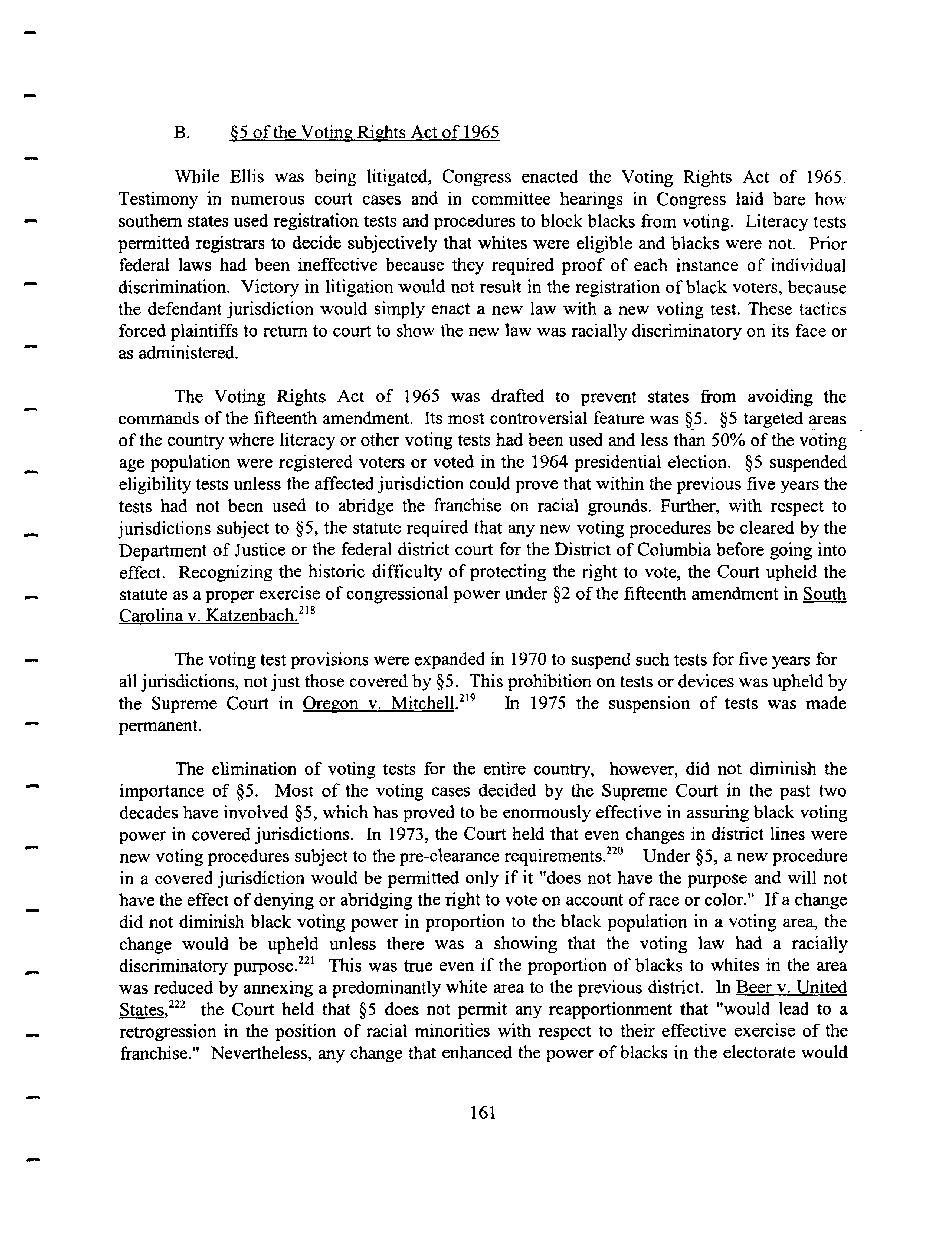|
B. §5 of the Voting Rights Act of 1965
While Ellis was being litigated, Congress enacted the Voting Rights Act of 1965.
Testimony in numerous court cases and in committee hearings in Congress laid bare how
southern states used registration tests and procedures to block blacks from voting. Literacy tests
permitted registrars to decide subjectively that whites were eligible and blacks were not. Prior
federal laws had been ineffective because they required proof of each instance of individual
discrimination. Victory in litigation would not result in the registration of black voters, because
the defendant jurisdiction would simply enact a new law with a new voting test. These tactics
forced plaintiffs to return to court to show the new law was racially discriminatory on its face or
as administered.
The Voting Rights Act of 1965 was drafted to prevent states from avoiding the
commands of the fifteenth amendment. Its most controversial feature was §5. §5 targeted areas
of the country where literacy or other voting tests had been used and less than 50% of the voting
age population were registered voters or voted in the 1964 presidential election. §5 suspended
eligibility tests unless the affected jurisdiction could prove that within the previous five years the
tests had not been used to abridge the franchise on racial grounds. Further, with respect to
jurisdictions subject to §5, the statute required that any new voting procedures be cleared by the
Department of Justice or the federal district court for the District of Columbia before going into
effect. Recognizing the historic difficulty of protecting the right to vote, the Court upheld the
statute as a proper exercise of congressional power under §2 of the fifteenth amendment in South
Carolina v. Katzenbach.218
The voting test provisions were expanded in 1970 to suspend such tests for five years for
all jurisdictions, not just those covered by §5. This prohibition on tests or devices was upheld by
the Supreme Court in Oregon v. Mitchell.219 In 1975 the suspension of tests was made
permanent.
The elimination of voting tests for the entire country, however, did not diminish the
importance of §5. Most of the voting cases decided by the Supreme Court in the past two
decades have involved §5, which has proved to be enormously effective in assuring black voting
power in covered jurisdictions, hi 1973, the Court held that even changes in district lines were
new voting procedures subject to the pre-clearance requirements.220 Under §5, a new procedure
in a covered jurisdiction would be permitted only if it "does not have the purpose and will not
have the effect of denying or abridging the right to vote on account of race or color." If a change
did not diminish black voting power in proportion to the black population in a voting area, the
change would be upheld unless there was a showing that the voting law had a racially
discriminatory purpose.221 This was true even if the proportion of blacks to whites in the area
was reduced by annexing a predominantly white area to the previous district. In Beer v. United
States.222 the Court held that §5 does not permit any reapportionment that "would lead to a
retrogression in the position of racial minorities with respect to their effective exercise of the
franchise." Nevertheless, any change that enhanced the power of blacks in the electorate would
161
�
|

